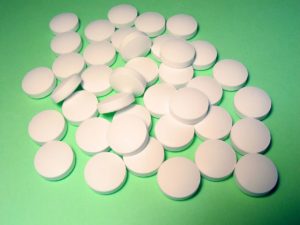For years doctors said babies "didn't feel pain like adults" (they said it was just a "reflex") and so all sorts of procedures and operations were done on infants without pain relief medication. This research shows those doctors were wrong and not giving infants pain relief medications is just cruel. From Medical Xpress:
Babies feel pain 'like adults'
The brains of babies 'light up' in a very similar way to adults when exposed to the same painful stimulus, a pioneering Oxford University brain scanning study has discovered. It suggests that babies experience pain much like adults.
The study looked at 10 healthy infants aged between one and six days old and 10 healthy adults aged 23-36 years....During the research babies, accompanied by parents and clinical staff, were placed in a Magnetic Resonance Imaging (MRI) scanner where they usually fell asleep. MRI scans were then taken of the babies' brains as they were 'poked' on the bottom of their feet with a special retracting rod creating a sensation 'like being poked with a pencil' - mild enough that it did not wake them up. These scans were then compared with brain scans of adults exposed to the same pain stimulus.
The researchers found that 18 of the 20 brain regions active in adults experiencing pain were active in babies. Scans also showed that babies' brains had the same response to a weak 'poke' (of force 128mN) as adults did to a stimulus four times as strong (512mN). The findings suggest that not only do babies experience pain much like adults but that they also have a much lower pain threshold.
'This is particularly important when it comes to pain: obviously babies can't tell us about their experience of pain and it is difficult to infer pain from visual observations. In fact some people have argued that babies' brains are not developed enough for them to really 'feel' pain, any reaction being just a reflex - our study provides the first really strong evidence that this is not the case.' The researchers say that it is now possible to see pain 'happening' inside the infant brain and it looks a lot like pain in adults.
As recently as the 1980s it was common practice for babies to be given neuromuscular blocks but no pain relief medication during surgery [1]. In 2014 a review of neonatal pain management practice in intensive care highlighted that although such infants experience an average of 11 painful procedures per day 60% of babies do not receive any kind of pain medication [2].
Our study suggests that not only do babies experience pain but they may be more sensitive to it than adults,' said Dr Slater. 'We have to think that if we would provide pain relief for an older child undergoing a procedure then we should look at giving pain relief to an infant undergoing a similar procedure.'

 Well worth reading in its entirety. In summary: Anyone who is physically capable of activity should try to reach at least 150 minutes of physical activity per week (walking is good) and have around 20 to 30 minutes of that be vigorous activity. This significantly lowers the risk of dying prematurely. (NOTE: the second study mentioned was in the April 8, 2015 post:
Well worth reading in its entirety. In summary: Anyone who is physically capable of activity should try to reach at least 150 minutes of physical activity per week (walking is good) and have around 20 to 30 minutes of that be vigorous activity. This significantly lowers the risk of dying prematurely. (NOTE: the second study mentioned was in the April 8, 2015 post:  Macular degeneration is a feared condition, so this study finding a link with calcium supplements and age-related macular degeneration in those 68 and older is a bit alarming. However, it shows
Macular degeneration is a feared condition, so this study finding a link with calcium supplements and age-related macular degeneration in those 68 and older is a bit alarming. However, it shows